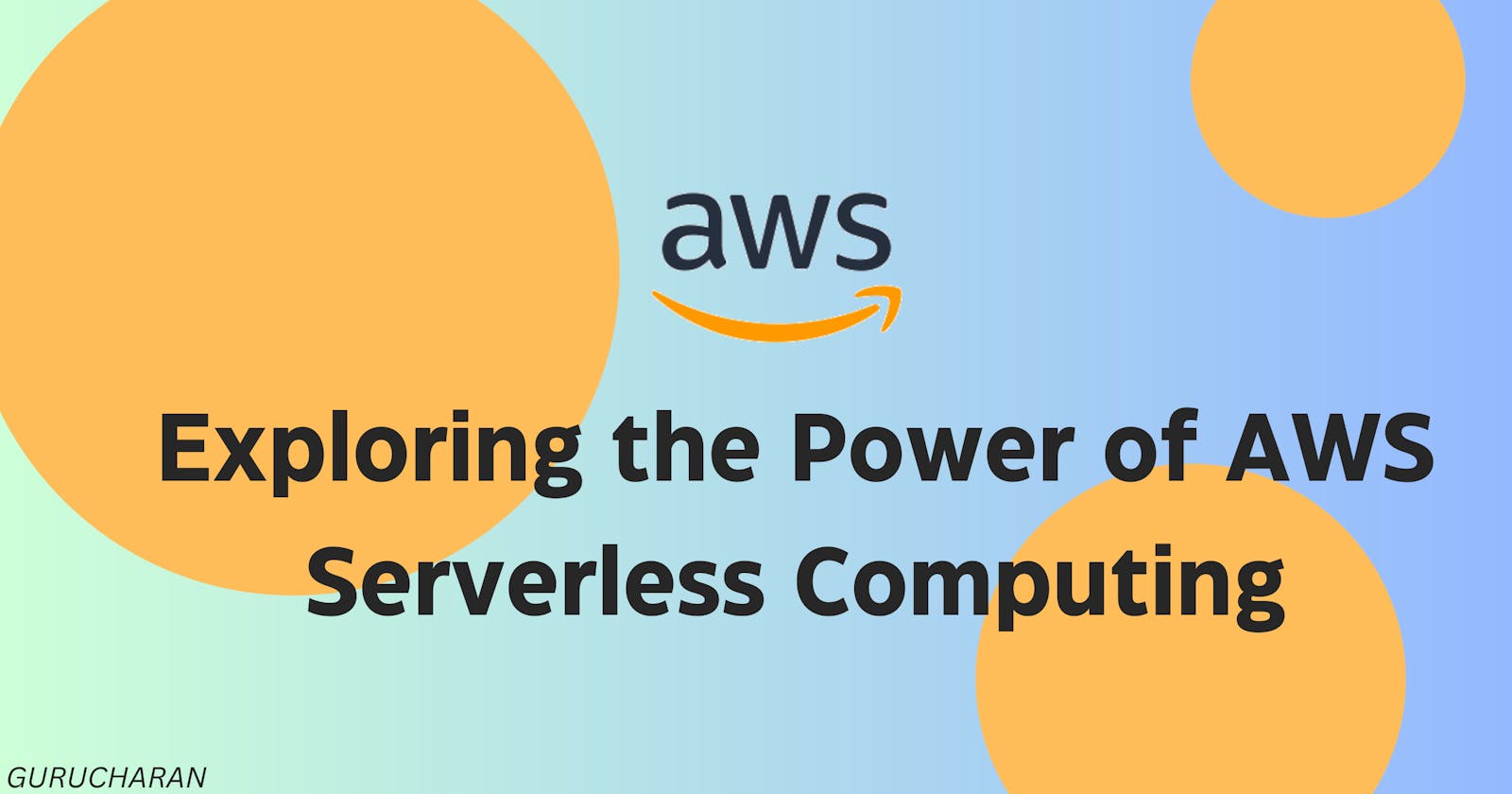Introduction
In recent years, serverless computing has emerged as a revolutionary approach to application development and deployment. Amazon Web Services (AWS) provides a comprehensive serverless computing platform, offering a wide range of services and tools that enable developers to build and run applications without the need to manage traditional server infrastructure. In this blog post, we will dive deep into AWS serverless, exploring its benefits, key components, and real-world use cases.
Understanding Serverless Computing
Serverless computing is a cloud computing model where the cloud provider dynamically manages the allocation of computing resources, allowing developers to focus solely on writing and deploying code. With AWS serverless, you don't have to worry about server provisioning, scaling, and maintenance. Instead, you can focus on building scalable, event-driven applications that automatically scale to meet demand.
Key Components of AWS Serverless
AWS offers several key services and tools that form the foundation of its serverless computing platform:
a. AWS Lambda:
AWS Lambda is a function-as-a-service (FaaS) platform that lets you run code without provisioning or managing servers. You can write Lambda functions in various programming languages, including Node.js, Python, Java, and more. Lambda functions can be triggered by various events, such as HTTP requests, file uploads, database updates, and messaging system events.
b. Amazon API Gateway:
API Gateway is a fully managed service that allows you to create, publish, and manage APIs for your serverless applications. It acts as a front door for your serverless functions, enabling you to expose RESTful APIs or WebSocket interfaces to invoke your Lambda functions. API Gateway offers features like authentication, authorization, request/response transformations, and traffic management.
c. Amazon DynamoDB:
DynamoDB is a fully managed NoSQL database service offered by AWS. It seamlessly integrates with serverless applications, providing a highly scalable and performant data storage solution. You can use DynamoDB to store and retrieve data for your serverless applications, and it can trigger Lambda functions based on database events.
d. AWS Step Functions:
Step Functions allow you to build serverless workflows and coordinate multiple AWS services into a serverless application. It provides a visual interface to design and run state machines, making it easy to orchestrate complex, event-driven workflows.
Benefits of AWS Serverless
Using AWS serverless computing offers several advantages for developers and businesses:
a. Reduced Operational Overhead:
With serverless, you don't need to manage servers, operating systems, or infrastructure scaling. AWS takes care of these responsibilities, allowing you to focus on writing code and delivering value to your users.
b. Cost Efficiency:
With serverless, you pay only for the actual compute time consumed by your code. You don't incur costs when your functions are idle. This pay-as-you-go model can significantly reduce costs, especially for applications with sporadic or unpredictable traffic patterns.
c. Auto-Scaling and High Availability:
AWS serverless services automatically scale your applications in response to workload changes. Whether you have a few users or millions, your applications can scale seamlessly to handle the demand. Additionally, AWS provides built-in redundancy and fault tolerance to ensure high availability.
d. Faster Time-to-Market:
Serverless computing allows developers to focus on writing business logic and features rather than dealing with infrastructure. This enables faster development cycles, rapid prototyping, and quicker time-to-market for new applications and features.
Real-World Use Cases:
AWS serverless computing is suitable for a wide range of use cases, including:
a. Web and Mobile Backends:
Serverless is an excellent choice for building scalable web and mobile backends that handle variable traffic loads. The combination of Lambda functions, API Gateway, and DynamoDB allows you to create robust and scalable APIs, handle user authentication and authorization, and store and retrieve data efficiently.
b. Real-time Data Processing:
Serverless is ideal for processing and analyzing real-time data streams. Services like AWS Lambda and Amazon Kinesis can be used to process and transform streaming data, enabling real-time analytics, data enrichment, and event-driven architectures.
c. Chatbots and Voice Assistants:
Serverless architectures are well-suited for building chatbots and voice assistants. You can leverage AWS Lambda and Amazon Lex to create conversational interfaces that respond to user inputs, integrate with backend services, and provide intelligent responses.
d. File and Image Processing:
AWS serverless services can handle file and image processing tasks efficiently. You can use Lambda functions triggered by events like file uploads to process and manipulate images, generate thumbnails, extract metadata, or perform OCR (Optical Character Recognition) on documents.
e. Internet of Things (IoT) Applications:
Serverless computing is a natural fit for IoT applications that generate large volumes of sensor data. Services like AWS IoT Core, AWS Lambda, and AWS Step Functions can be used to ingest, process, and react to IoT events, enabling real-time monitoring, analytics, and automation.
Conclusion
AWS serverless computing provides developers with a powerful and flexible platform to build highly scalable and cost-efficient applications. By abstracting away the underlying infrastructure and managing the scaling and availability aspects, developers can focus on writing code and delivering value to their users. With services like AWS Lambda, Amazon API Gateway, DynamoDB, and Step Functions, you have a comprehensive toolkit to build serverless applications for various use cases. Whether you are a startup looking to quickly develop and launch a new product or an enterprise seeking to optimize costs and improve scalability, AWS serverless computing can be a game-changer in your development journey. Embrace the serverless paradigm and unlock the potential of AWS to build scalable, event-driven applications.
Thank you for reading this blog and if any queries or if any corrections to be done in this blog please let me know.
contact us in Linkedin ,Twitter or email-id gurucharanu716@gmail.com
